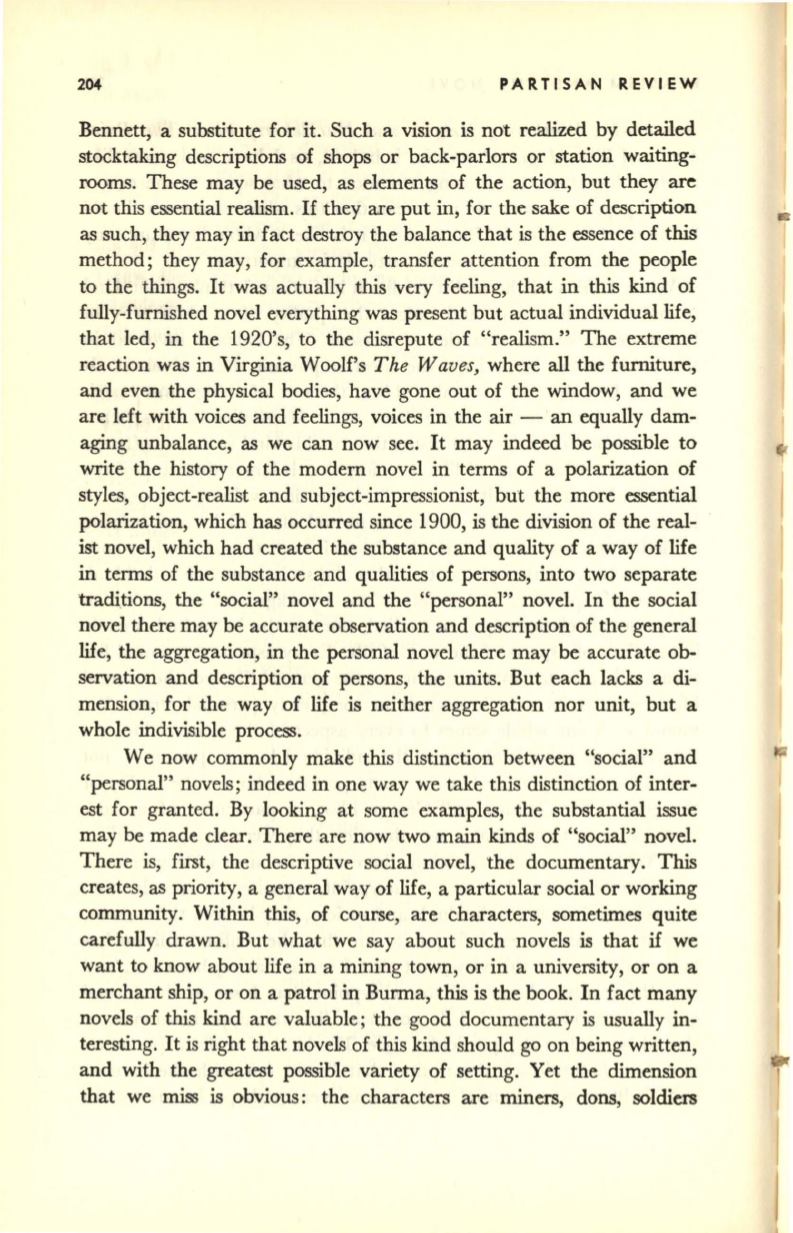
204
PARTISAN REVIEW
Bennett, a substitute for it. Such a vision is not realized by detailed
stocktaking descriptions of shops or back-parlors or station waiting–
rooms. These may be used, as elements of the action, but they are
not this essential realism.
If
they are put in, for the sake of description
as such, they may in fact destroy the balance that is the essence of this
method; they may, for example, transfer attention from the people
to the things. It was actually this very feeling, that in this kind of
fully-furnished novel everything was present but actual individual life,
that led, in the 1920's, to the disrepute of "realism." The extreme
reaction was in Virginia Woolf's
The Waves,
where all the furniture,
and even the physical bodies, have gone out of the window, and we
are left with voices and feelings, voices in the air - an equally dam–
aging unbalance, as we can now see. It may indeed
be
possible to
write the history of the modem novel in terms of a polarization of
styles, object-realist and subject-impressionist, but the more essential
polarization, which has occurred since 1900, is the division of the real–
ist novel, which had created the substance and quality of a way of life
in terms of the substance and qualities of persons, into two separate
tradi.tions, the "social" novel and the "personal" novel. In the social
novel there may be accurate observation and description of the general
life, the aggregation, in the personal novel there may be accurate ob–
servation and description of persons, the units. But each lacks a di–
mension, for the way of life is neither aggregation nor unit, but a
whole indivisible process.
We now commonly make this distinction between "social" and
"personal" novels; indeed in one way we take this distinction of inter–
est for granted. By looking at some examples, the substantial issue
may be made clear. There are now two main kinds of "social" novel.
There is, first, the descriptive social novel, the documentary. This
creates, as priority, a general way of life, a particular social or working
community. Within this, of course, are characters, sometimes quite
carefully drawn. But what we say about such novels
is
that
if
we
want to know about life in a mining town, or in a university, or on a
merchant ship, or on a patrol in Burma, this is the book. In fact many
novels of this kind are valuable; the good documentary is usually in–
teresting.
It
is right that novels of this kind should go on being written,
and with the greatest possible variety of setting. Yet the dimension
that we
miss
is obvious: the characters are miners, dons, soldiers


